Spiritual Art: A Guide to Finding the Divine in Creativity
Author:
GeorgeUpdated:
01.02.2025
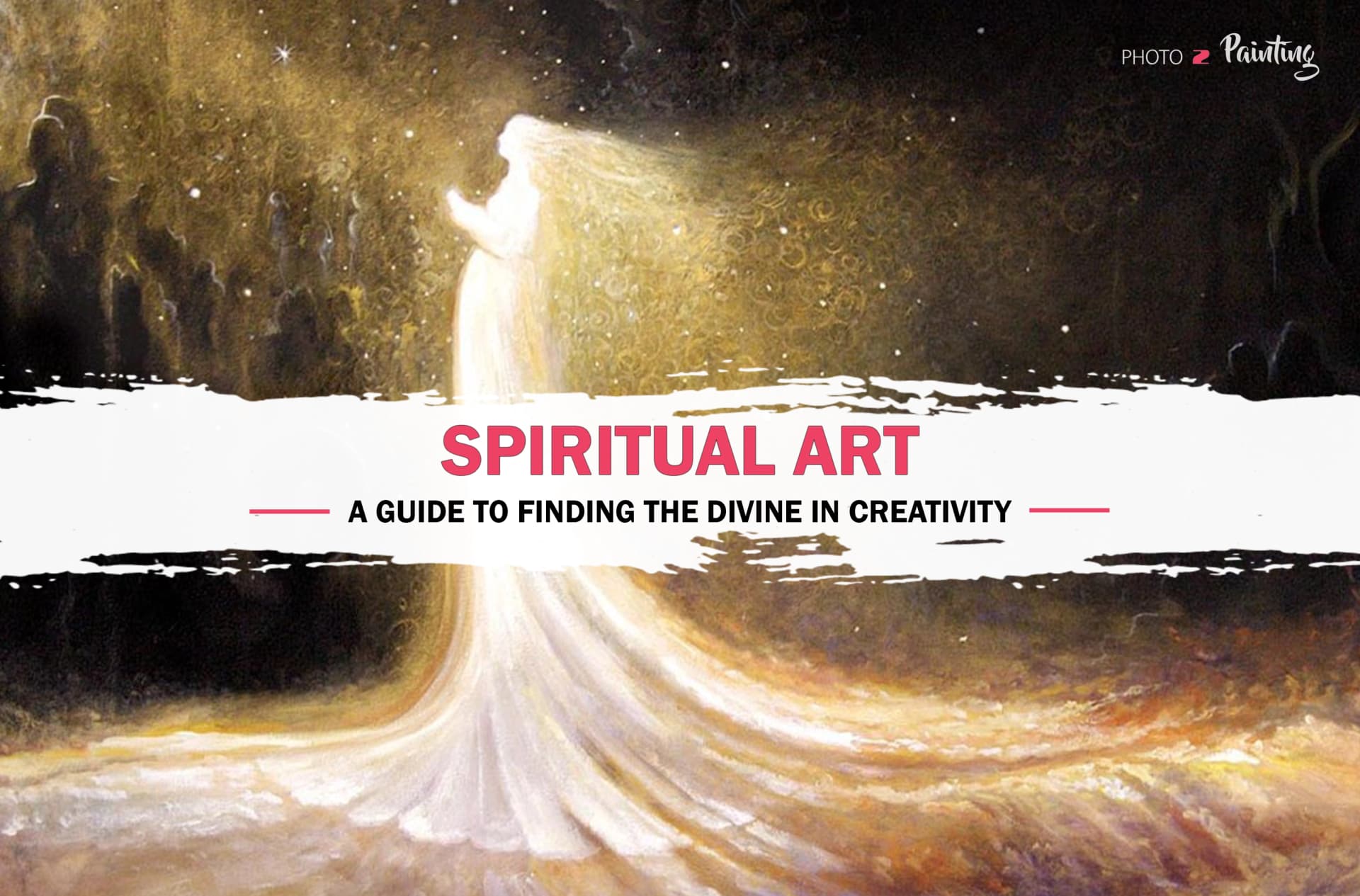

- Key Takeaways
- What Is Spiritual Art?
- The History of Spiritual Art
- 1.Ancient Roots
- 2.Religious Art
- 3.Spiritual Awakening in the Renaissance
- 4.Modern Movements
- 1.
- Themes in Spiritual Art
- 5.Showing Divine or Sacred Things
- 6.Using Symbols and Metaphors
- 7.Nature and the Universe
- 8.Feelings and Spiritual Experiences
- 5.
- Popular Mediums in Spiritual Art
- Techniques in Spiritual Art
- Famous Spiritual Art
- 9.The Creation of Adam by Michelangelo (1512)
- 10.The Ten Largest by Hilma af Klint (1907)
- 11.Black on Maroon by Mark Rothko (1958)
- 12.The Resurrection by Piero della Francesca (1460s)
- 13.The Light of the World by William Holman Hunt (1854)
- 9.
- The Role of Spiritual Art Today
- 14.Spiritual Art in Contemporary Society
- 15.Spiritual Art as a Tool for Reflection, Healing, and Community
- 16.The Influence of Modern Spirituality and Secularism
- 17.A Timeless Purpose
- 14.
People have always felt a deep connection to a higher power or divine being, but words alone have never been enough to show this special bond. Across time and cultures, people have found ways to express their emotions, devotion, and awe for something greater than themselves through art.
Over the centuries, artists have created spiritual art to share this deep connection. From ancient cave paintings that showed their beliefs to grand temples and modern art that feels full of mystery, spiritual art has been a powerful way to express what words cannot. Without it, we might have lost the feelings and faith of our ancestors—or even our own.
As Banksy said,
“Art as a tool for social and spiritual change.”
Spiritual art is a reminder that creativity doesn’t just stay on the surface. It hits deep and connects us to something greater. Whether it’s a painting, sculpture, or symbolic design, spiritual art speaks where words can’t. That’s its power. That’s its legacy. Simple shapes. Big emotions. Endless meaning.
Key Takeaways
Spiritual art shows feelings, beliefs, and a connection to something greater.
It started with cave paintings and grew into religious and modern forms of art.
Common ideas include divine beings, symbols, nature, and emotions.
Artists use tools like frescoes, mosaics, oil paints, and digital art.
The Creation of Adam and The Ten Largest are well-known examples.
Spiritual art helps people heal, reflect, and feel connected.
Artists use light, color, and shapes to create meaning and emotion.
Spiritual art inspires and connects people across time and cultures.
What Is Spiritual Art?
Spiritual art is more than just visuals—it’s a language of the soul. It taps into deep emotions, beliefs, and the mysteries of life. It connects us to something greater than ourselves. This kind of art isn’t just about looking beautiful—it’s about making people feel something meaningful and helping them reflect on their emotions and beliefs.
Spiritual art takes many forms. It might be a painting of faith symbols, like angels or the cosmos, or a sculpture that brings a sense of peace and calm. Sometimes, it’s abstract, using shapes and colors to express emotions that words can’t capture. At its core, spiritual art often explores universal themes like love, hope, peace, and the search for life’s deeper meaning.
People have been creating spiritual art for thousands of years. From the cave paintings of ancient times to the intricate mandalas in Buddhist temples, spiritual art has always been a way to connect with the divine, ourselves, and one another. Today, spiritual art continues to evolve, appearing in everything from meditation apps to modern installations that explore mindfulness. It reminds us of the beauty and mystery that surround us. It itself invites us to see the world and ourselves with fresh eyes.
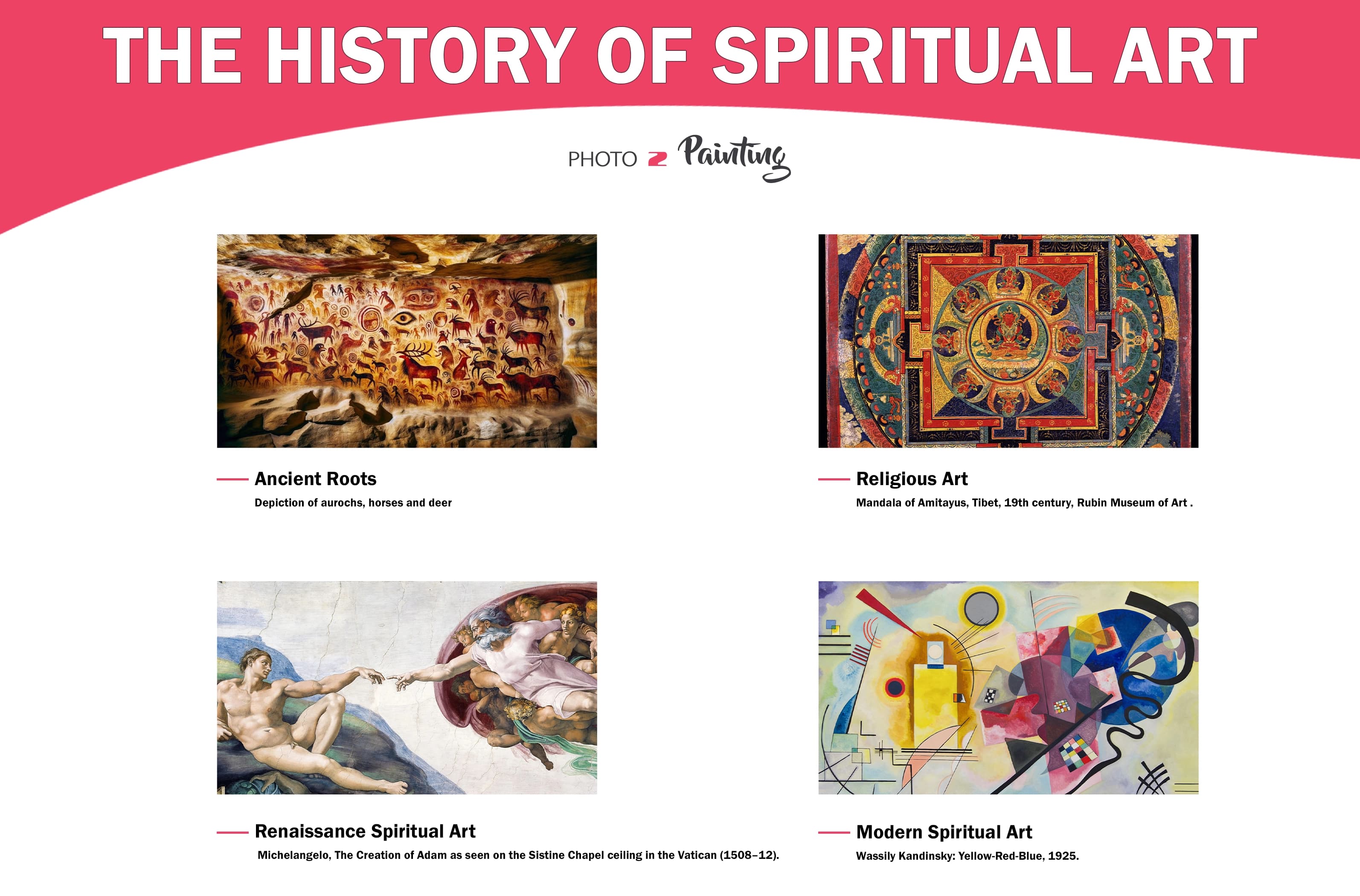
The History of Spiritual Art
Spiritual art has been part of human history for thousands of years. It helps people express their beliefs, emotions, and connection to something greater. Artists like Hilma af Klint and Wassily Kandinsky pioneered abstract approaches to spiritual themes, often blending elements seen in surrealist paintings to explore the mysteries of existence. But how has spiritual art evolved over time?
Ancient Roots
The story of spiritual art begins with early humans. Cave paintings, like the ones in Lascaux, France, were more than just pictures—they reflected beliefs, respect for nature, and awe for the animals they depended on. Early civilizations also created statues and carvings of their gods as a way to worship and feel closer to the divine. Though simple, these artworks were deeply meaningful, laying the foundation for spiritual expression in art.
Religious Art
As organized religions emerged, spiritual art became more intricate and beautiful. Christians crafted icons and stained glass windows to tell stories from the Bible and inspire faith. Islamic calligraphy turned the words of the Quran into breathtaking works of art. Hindu temples were adorned with carvings of deities and sacred stories, while Buddhists created mandalas—elaborate patterns representing the universe that also served as tools for meditation. Each culture developed its own unique style to reflect its spiritual beliefs.
Spiritual Awakening in the Renaissance
During the Renaissance, spiritual art underwent a transformation. Artists began to explore religious themes through the lens of human emotion and beauty. Michelangelo’s Sistine Chapel ceiling is a perfect example. It blends divine imagery with raw, human emotion. Art from this period didn’t just depict gods or saints; it also showed the profound connection between humans and the divine, making it more personal and moving.
Modern Movements
In modern times, spiritual art broke away from traditional religion. It embraces abstraction and individual expression. Artists like Wassily Kandinsky used bold shapes and colors to convey emotions and spiritual ideas. Hilma af Klint created mysterious, colorful works inspired by her beliefs in the spiritual realm. Many contemporary artists now explore dreams, meditation, and the search for meaning in everyday life, showing that spirituality can be deeply personal and universal.
From ancient cave paintings to modern abstract masterpieces, spiritual art has always been a bridge between humanity and the divine. It reminds us that art and spirituality are timeless partners, helping us express the inexpressible and explore the mysteries of existence.
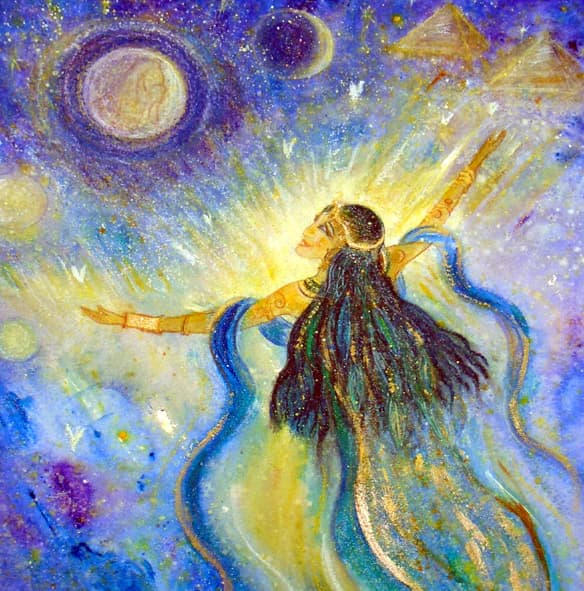
Themes in Spiritual Art
Spiritual art reflects humanity’s endless quest for meaning and connection. Across cultures and time, certain themes emerge. They offer a glimpse into how art helps us explore faith, emotions, and the mysteries of existence. Here are some of the main themes you’ll find in spiritual art:
Showing Divine or Sacred Things
Many spiritual artworks depict gods, angels, or other holy beings. For example, Christian art often portrays Jesus or Mary, while Hindu art celebrates deities like Vishnu and Shiva. These images serve as reminders of faith and humanity’s connection to the sacred, creating a bridge between the divine and the earthly.
Using Symbols and Metaphors
Symbols play a key role in spiritual art. It conveys profound ideas without the need for words. A dove, for instance, symbolizes peace and the Holy Spirit in Christianity, while a lotus flower represents purity and enlightenment in Buddhism. These symbols give visual form to abstract spiritual concepts, allowing viewers to engage with them on a deeper level.
Animals often hold spiritual significance in art. While doves or lotus flowers are common symbols, even unique works like famous cat art explore themes of mystery and reverence in creative ways.
Nature and the Universe
Nature is a powerful theme in spiritual art. Elements like the sun, moon, mountains, and stars often symbolize eternity, power, or the divine. Mandalas, inspired by the patterns of the universe, reflect the beauty and balance of life. Sacred landscapes, such as Mount Fuji in Japan or Mount Sinai in Judaism, remind us of the connection between nature and the divine.
Feelings and Spiritual Experiences
Spiritual art often evokes emotions like peace, wonder, and awe. Abstract works use colors, shapes, and patterns to express feelings that are hard to put into words. By engaging with these pieces, viewers are invited to reflect on their own emotions and their place in the world.
These themes highlight the universal language of spiritual art—a powerful way to express faith, emotions, and the mysteries of life. Through depictions of the divine, symbols, nature, and profound feelings, spiritual art continues to inspire and connect people across cultures and generations.
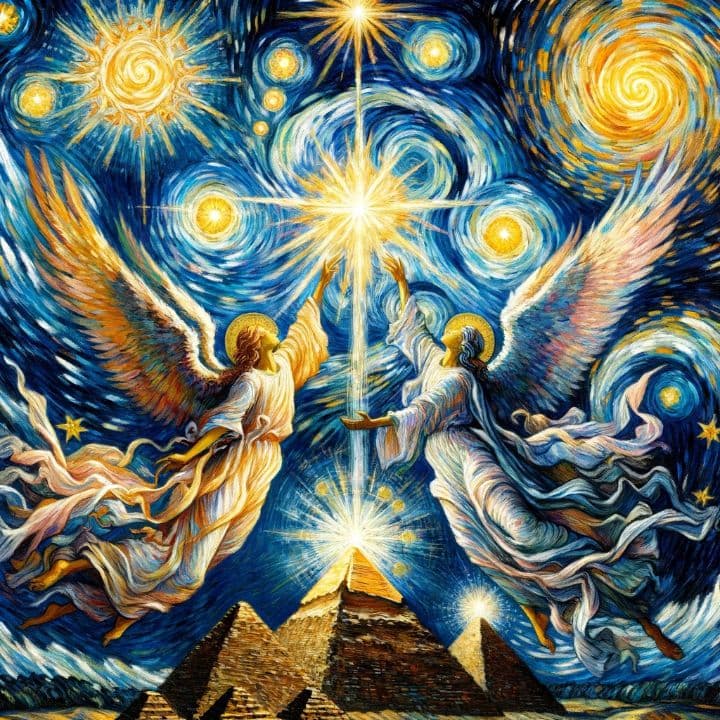
Popular Mediums in Spiritual Art
Throughout history, artists have used a wide range of mediums to create spiritual art, each chosen for its ability to evoke emotions and connect people to the divine. Modern artists experiment with various materials to evoke spiritual meaning. Understanding the differences in mediums, like watercolor vs. acrylic, can help new creators choose the best tools to express their vision. These mediums have evolved over time, reflecting changes in culture, technology, and artistic expression.
Traditional Mediums
For centuries, spiritual art was crafted with traditional materials that held symbolic and functional significance. Frescoes, painted onto wet plaster, adorned churches and temples with vibrant spiritual stories. Mosaics, made by arranging tiny pieces of glass or stone, created stunning images that shimmered in sacred spaces. Sculptures, carved from stone or cast in metal, honored gods, saints, and sacred figures. It brings spiritual symbols to life in real forms. These mediums helped translate spiritual ideas into powerful visual narratives.
Preserving spiritual artworks is just as important as creating them. Learning techniques like how to varnish an oil painting ensures their longevity and vibrancy for generations to come.
Contemporary Mediums
Today, spiritual art, like other art styles, embraces modern materials and methods. Digital art allows artists to explore themes like the universe and human consciousness. It uses technology to create stunning visuals. Installations, large-scale artworks set in public spaces, immerse viewers in spiritual experiences.It blends light, sound, and movement. Mixed media, which combines materials like paint, fabric, and found objects, offers a creative way to explore spiritual themes in unconventional formats. Artists continue to push boundaries, finding new ways to express spirituality in the modern world.
Techniques in Spiritual Art
Beyond the materials used, spiritual art relies on techniques that amplify its emotional and symbolic impact. Choosing the right painting sizes can dramatically affect how spiritual art is perceived, from intimate pieces meant for personal reflection to large-scale works for public spaces.
Use of Light
Light has always been important in spiritual art. In traditional art, sunlight shining through stained glass windows made colorful patterns that inspired and uplifted people. It created a special feeling in churches and other sacred places. This makes them seem full of wonder and connection to the divine.
In modern times, artists often use artificial light to create glowing effects. These lights can make art feel peaceful, otherworldly, or meditative. Light sculptures and installations are popular today, turning spaces into places where people can reflect and feel connected to something greater.
By using light, both traditional and modern artists help people feel emotions and experience the spiritual side of art.
Use of Color
Colors are carefully chosen in spiritual art to make people feel emotions and understand deeper meanings. For example, gold often stands for the divine or something holy. Blue is used to show peace and calmness, while red represents passion or strong devotion.
Artists use these colors on purpose to create feelings that connect with viewers. By combining colors thoughtfully, they make painting style that speak to the heart and help people feel closer to the spiritual messages in the art.
Use of Form
Shapes and forms carry profound symbolism in spiritual art. Circular designs, like mandalas, represent infinity and wholeness, while soft, flowing shapes create a sense of calm. Angular and sharp forms can symbolize energy, strength, or divine power. How these forms are arranged helps convey complex spiritual ideas, blending visual harmony with deep meaning.
Through a mix of traditional and contemporary mediums and timeless techniques, spiritual art continues to bridge the gap between the earthly and the divine. It inspires reflection, evokes powerful emotions, and connects people to their beliefs, their feelings, and the mysteries of life.
Famous Spiritual Art
Spiritual art has shaped the way we connect with the divine, explore transformation, and reflect on life’s biggest questions. Here are some of the most iconic spiritual artworks that still captivate us today.
The Creation of Adam by Michelangelo (1512)
When you think of spiritual art, “The Creation of Adam” practically screams iconic. This masterpiece is part of the Sistine Chapel ceiling in Vatican City, painted by Michelangelo in the early 1500s. The fresco captures the electrifying moment when God breathes life into Adam, bringing him to existence.
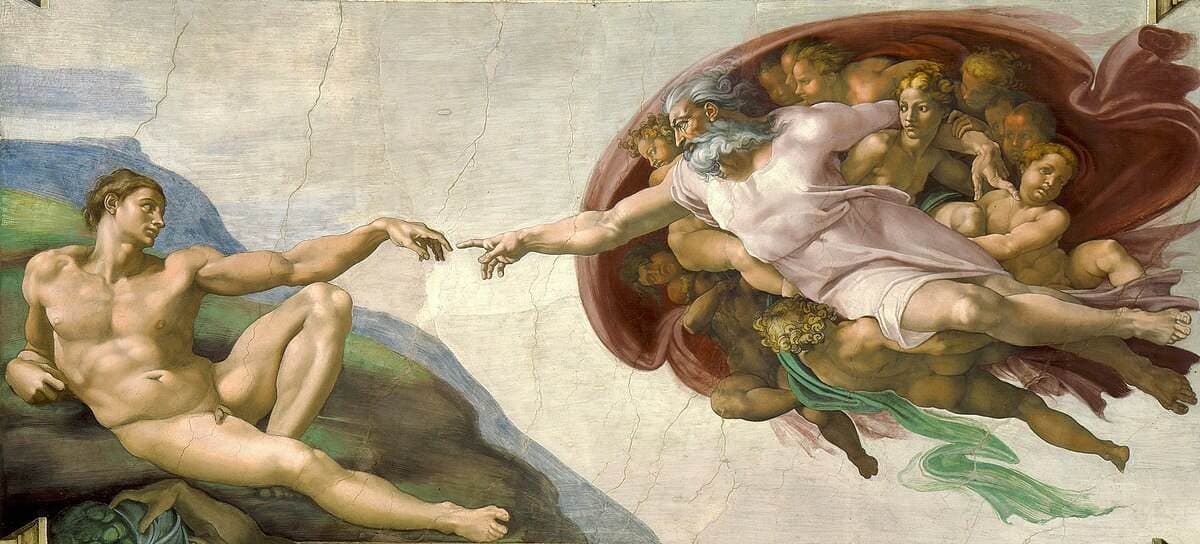
The most famous detail? That almost-touch between their outstretched hands. It’s a powerful symbol of the sacred connection between humanity and the divine—a moment filled with energy, potential, and meaning. Michelangelo’s use of stunning detail, lifelike figures, and dynamic composition brings the scene to life, making viewers feel the weight of this divine encounter.
“The Creation of Adam” is more than just a painting; it’s a timeless reminder of the power of creation, faith, and humanity’s unique bond with God. It remains one of the most celebrated works of art in history, continuing to inspire awe and wonder centuries after it was created.
The Ten Largest by Hilma af Klint (1907)
Way ahead of her time, Hilma af Klint was serving spiritual abstract realness before it was even cool. Her series “The Ten Largest” takes viewers through the stages of life—childhood, youth, adulthood, and old age. She was using bold colors, spirals, and floral patterns. Each painting is filled with vibrant energy and symbolism. It reflected the cycle of life and the continuous growth of the soul.
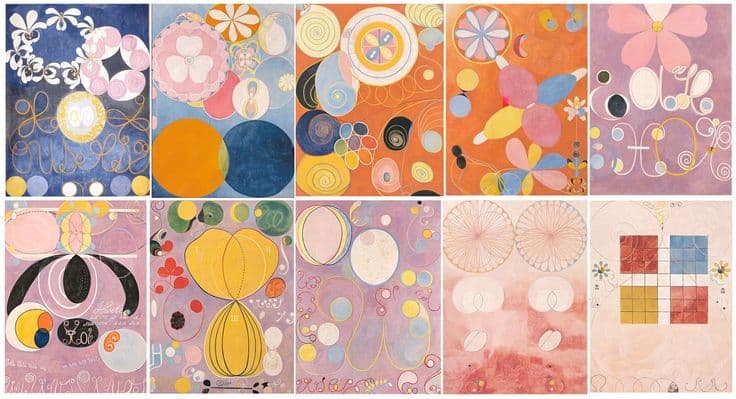
Part of her groundbreaking “Paintings for the Temple”, these works weren’t just about art; they were deeply tied to Hilma’s belief in a spiritual world beyond what we see. She viewed her art as a way to explore higher planes of existence and communicate universal truths about life, love, and the divine.
Hilma wasn’t just painting—she was building a roadmap to the spiritual world. Her work challenged traditional ideas about art and inspired later generations of abstract artists. Today, “The Ten Largest” stands as a powerful reminder of how creativity can connect us to something greater, transcending time, space, and even the physical world.
Black on Maroon by Mark Rothko (1958)
Minimalism meets maximum feels in Mark Rothko’s Black on Maroon. This piece, part of a series created for the Rothko Chapel in Houston, uses deep reds and blacks to hit you right in the soul. It’s not about what’s painted. It’s about what you feel while looking at it. Rothko’s work invites you into the abyss, asking big questions about existence, spirituality, and the infinite. It’s haunting, it’s profound, and it stays with you long after you’ve seen it.
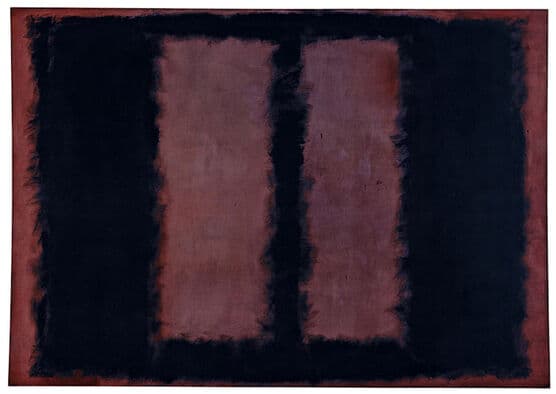
These works are proof that spiritual art isn’t limited to one style or medium. Whether it’s the grandeur of the Sistine Chapel, the revolutionary abstractions of Hilma af Klint, or the emotional depths of Rothko’s color fields, spiritual art pushes boundaries to express divine ideas, personal transformation, and raw, universal emotions.
The Resurrection by Piero della Francesca (1460s)
“The Resurrection” by Piero della Francesca is one of the most famous paintings of the Renaissance. It shows Jesus Christ rising from the tomb, a powerful symbol of hope, new life, and victory over death. In the painting, Jesus stands tall and calm. He is holding a flag that represents his triumph. Around him, the soldiers who were guarding the tomb are asleep. They are showing their human weakness compared to his divine strength.
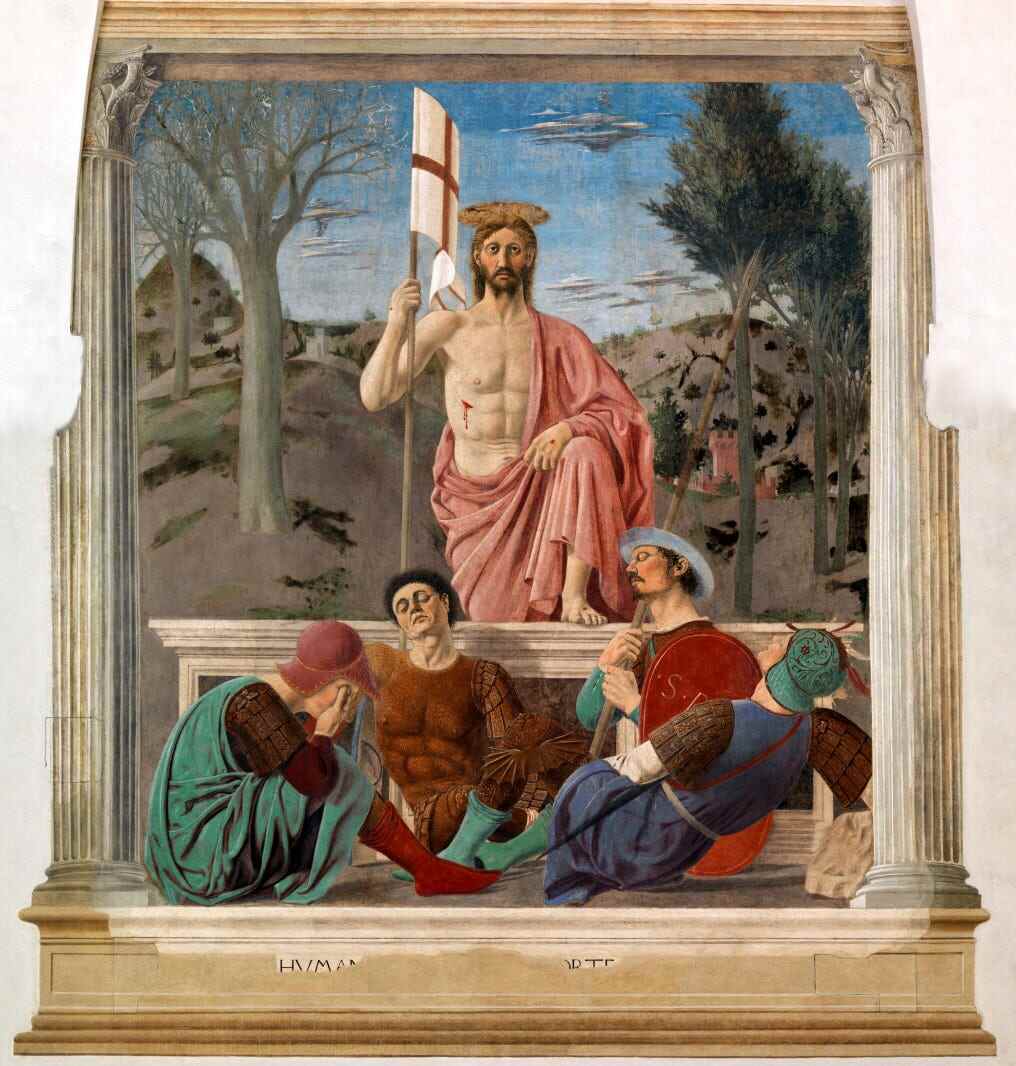
The painting is carefully balanced, with a sense of peace and order. Even though it shows a dramatic moment, the calm expressions and soft colors make it feel serene and full of meaning. It’s not just a picture of an event—it’s a reminder of faith, renewal, and the promise of something greater.
The Light of the World by William Holman Hunt (1854)
“The Light of the World” by William Holman Hunt is filled with spiritual meaning. It shows Jesus standing outside a door. He is shown holding a glowing lantern in one hand while gently knocking on the door with the other. The door represents the human heart, and the message is that Jesus is waiting to enter if people open their hearts to him.
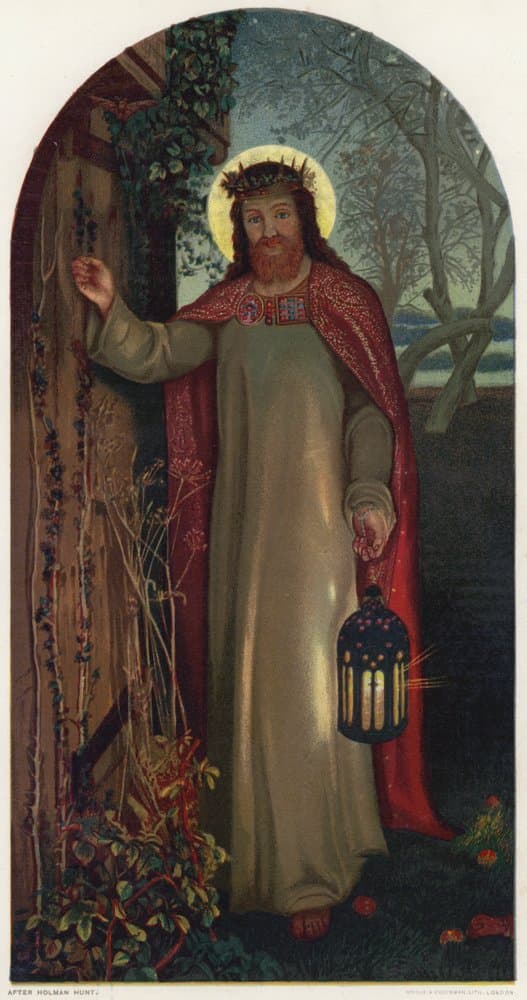
The lantern in his hand symbolizes Jesus as the light that guides people through darkness. He is the one bringing hope and faith. What makes this painting even more interesting is the detail in the door—it’s overgrown with vines. It shows that it hasn’t been opened in a long time. This adds to the idea that people need to make an effort to welcome spiritual light into their lives.
The painting is deeply emotional and has inspired many viewers to reflect on their own faith and connection to God. Its use of light and symbolism makes it one of the most moving spiritual artworks ever created.
The Role of Spiritual Art Today
Spiritual art remains a powerful force in today’s world. Though its forms and contexts have evolved, its purpose to inspire, heal, and connect, continues to resonate deeply.
Spiritual Art in Contemporary Society
In modern life, spiritual art has broken free from traditional settings like churches and temples. Now, you’ll find it everywhere—from museums and public spaces to personal sanctuaries in people’s homes. Artists use spiritual themes to spark meaningful conversations about life’s big questions, helping viewers connect with their emotions and beliefs.
With the rise of technology, spiritual art has entered the digital realm, appearing in virtual galleries, meditation apps, and even social media. This shift has made it more accessible than ever. It invites a global audience to experience its transformative power.
Spiritual Art as a Tool for Reflection, Healing, and Community
One of the most significant roles of spiritual art today is its ability to foster reflection and healing. Whether creating or simply viewing it, spiritual art can provide a sense of calm, clarity, and renewal—especially in challenging times.
In therapy, spiritual art becomes a tool for self-expression, allowing people to explore emotions they struggle to articulate. Beyond individual healing, it also serves communities. Murals, sculptures, and large-scale installations often become gathering spaces where people share common beliefs, stories, and experiences, fostering a sense of unity.
Spiritual art often serves as a way to honor and remember loved ones. For instance, creating or commissioning memorial painting ideas can offer comfort and a sense of connection during times of loss.
The Influence of Modern Spirituality and Secularism
Today’s spiritual art reflects a broader understanding of spirituality—one that extends beyond organized religion. Modern spirituality emphasizes personal growth, mindfulness, and connection to the universe, inspiring artists to create works that explore these themes in abstract, symbolic, or experimental ways.
At the same time, secular (non-religious) artists draw from spiritual themes to address profound questions about existence, humanity, and nature. This approach highlights how spiritual art can speak to everyone, regardless of belief, by touching on universal truths and shared human experiences.
A Timeless Purpose
Spiritual art continues to inspire, heal, and connect us, whether through traditional or modern forms, religious or secular themes. It invites us to explore our inner selves, reflect on life’s mysteries, and find meaning in the shared human experience. In a world that often feels disconnected, spiritual art is a reminder of the profound ways creativity can unite us.
Conclusion
As Pablo Picasso once said,
“Art washes away from the soul the dust of everyday life.”
Spiritual art goes beyond beauty—it’s a language of the soul. It is helping us feel, reflect, and connect with something greater than ourselves.
From the earliest cave paintings to today’s abstract masterpieces, spiritual art has been humanity’s companion in expressing the inexpressible. It includes your deepest emotions, beliefs, and hopes. It reveals the timeless bond between creativity and the divine, reminding us that art has the power to inspire, heal, and transform.
Spiritual art continues to enrich our lives. Whether it’s the serene gaze of a sacred figure, the intricate patterns of a mandala, or the vibrant mystery of an abstract canvas. It invites us to step out of the chaos of the everyday and into moments of peace, wonder, and connection. Also to ourselves, to each other, and to the infinite.
Frequently Asked Questions
What art represents the Holy Spirit?
Art that represents the Holy Spirit often shows symbols like a dove, flames, or light. These symbols come from the Bible, where the Holy Spirit is described as descending like a dove or appearing as tongues of fire. For example, many paintings show a dove surrounded by glowing light to represent peace and divine presence.
What are the biblical art styles?
Biblical art styles include iconography, which uses simple and symbolic images, and stained glass windows often found in churches. Frescoes and mosaics were common in early Christian art. Later, the Renaissance brought detailed and realistic biblical scenes, like Michelangelo's paintings in the Sistine Chapel.
Who founded spiritualism?
Spiritualism as a movement started in the mid-1800s, mainly in the United States. The Fox sisters, Margaret and Kate Fox, are often credited with its beginning because they claimed to communicate with spirits through mysterious "rapping" sounds. Spiritualism later spread and included art as a way to connect with the spiritual world.
What is an example of spirituality in art?
A great example of spirituality in art is Buddhist mandalas. These are colorful, detailed designs that represent the universe and help with meditation. Another example is Mark Rothko’s abstract paintings, which use color to create peaceful and emotional experiences that feel spiritual.
Who are the female spiritualist artists?
Some famous female spiritualist artists include Hilma af Klint, who created abstract paintings inspired by her spiritual beliefs, and Agnes Pelton, known for her dreamy, symbolic art. Both women explored deep, spiritual ideas in their work and were ahead of their time.
George, CEO of Photo2painting, is a passionate art lover and entrepreneur. He founded Photo2painting.com from scratch, inspired by his artist friends. As the company's CMO, he manages content and marketing.
Excellent Customer Reviews















































































































































